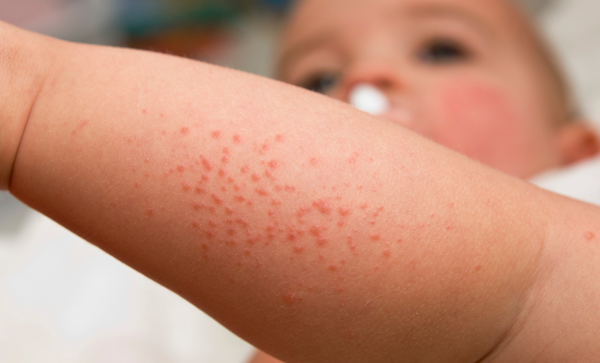Miliaria and Milia in Infants
Milia - are small yellowish-white bumps that can last for a few months. As a rule, these are seen on the forehead, nose and cheeks. They occur due to clogged sebaceous glands and are completely harmless. They require no treatment and go away on their own.
Miliaria - are small bumps that occur due to heat and sweat retention. They appear as small bumps / blisters with clear liquid in them. These can be avoided by making sure that the child does not get too hot.
Read more about rashes in childrenBook appointment

